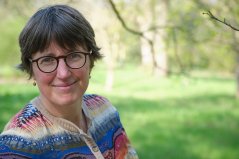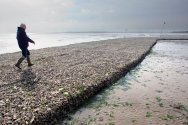Nature-Based Future Challenge: Meet the experts
Wageningen University & Research (WUR) is a leading academic institution in the field of nature-based solutions. WUR’s strength is its transdisciplinary approach in research and education: connecting scientists from different science groups with all kinds of stakeholders from industry, government and non-governmental organisations. The work of WUR on nature-based solutions aims to bridge the gap between science and practice, and to facilitate the widespread adoption of these approaches for the benefit of society and the environment.
WUR experts have been active in the field of nature-based solutions for over twenty years and have pioneered a number of projects that have taken hold in policy, leading the way for larger-scale implementation in the Netherlands and elsewhere.
Nature-based solutions involve us working alongside nature, harnessing its strength, to solve not just climate issues, but also the global loss of biodiversity.
Meet our experts
Meet Tim van Hattum, author of the ‘Only Planet, climate guide for the 21st century’:
“Humanity has been trying to tackle the climate problem chiefly with technological solutions. Meaning with solar power, wind energy, electric cars and so on. However, there is an increasing movement of people who think nature is also an important climate solution. Nature-based solutions involve us working alongside nature, harnessing its strength, to solve not just climate issues, but also the global loss of biodiversity.
Some think nature-based solutions are only about planting trees to reduce CO2 emissions. But we want to emphasise that there is an entire palette of them: widening rivers, restoring wetlands, regrowing mangrove forests, regenerating soils on which we farm, making cities greener... Scientifically, it is proven that nature-based solutions can contribute to achieving up to 37% of the Paris climate targets.
Nature-based solutions are not a panacea, but they are a very important addition to the technological solutions that we have. They are often more cost-effective and have multidimensional impact, with great value for society and human wellbeing. I believe nature-based solutions should be the starting point: a green way of thinking to inspire us.
Our vision for Netherlands 2120 has literally and metaphorically put nature-based solutions on the map. Meanwhile, it has become Dutch government policy that water and soil should guide future spatial developments. Nature-based thinking has taken a fast track. And not only has WUR has put that vision out there, but we are also involved in lots of research projects: think of ‘Ruimte voor de Rivier’, oyster reefs, salt marshes and stream restoration. Now, we are entering the next phase. With the evidence and knowledge that we and others have generated, policy makers need to be convinced to accelerate implementation of these solutions on a larger scale. In the Netherlands, but also abroad.
I would like to see the Netherlands being a frontrunner, a living lab for such solutions. In fact, every country in the world should have an ‘Netherlands 2120’ vision. But of course, we at WUR cannot achieve that by ourselves. So I thought: how cool would it be if we communicate this vision to young people and let them develop their own future? The idea of this student competition was to challenge young people to think about a nature-based future in different deltas. In doing so, I think we will transfer our way of thinking to a lot of people, and also inspire many others with the results.”

Meet Liesje Mommer, professor in plant ecology and leading the Wageningen Biodiversity Initiative:
“All life on Earth depends on and affects climate regulation. However, climate change is already dramatically reducing the functioning of our ecosystems and will lead to increasing rates of biodiversity loss. This biodiversity loss will reduce the ability of ecosystems to regulate temperature, water availability and greenhouse gas emissions, ultimately driving further climate change. Biodiversity loss and climate change should therefore be treated as strongly coupled global crises that undermine humanity. Therefore, nature-based solutions are a potential way to tackle these major ecological crises that we face. Yet, they are not a ‘quick fix’, they require connections with the landscape and the communities living in there.
Recently in Canada, at the COP15, a new Global Biodiversity Framework was agreed upon, that emphasise the role nature-based solutions play in tackling these intertwined crises:
Global Biodiversity Framework, target 11:
Restore, maintain and enhance nature’s contributions to people, including ecosystem functions and services, such as regulation of air, water, and climate, soil health, pollination and reduction of disease risk, as well as protection from natural hazards and disasters, through nature-based solutions and ecosystem-based approaches for the benefit of all people and nature.
So we will have to start working with nature, rather than erasing it. For me, there are two key elements to this approach:
- Nature-based solutions should be careful about the desired and potentially undesired implications of implementation at the level of the ecosystem. In the planning phase, it is important to become aware of the trade-offs between benefits and drawbacks to take better decisions. The balance may be different in different landscapes in different locations. So, I plead for integral solutions; integrated in the landscape and taking local contexts as a baseline.
- The success of implementation of nature-based solutions depends on local communities, as they have to live in and care for the landscape. Involving local (indigenous) people is essential to create understanding, support and connections and should be pivotal in any nature-based plan.
A concern about nature-based solutions is that they could be used as greenwashing of otherwise unsustainable practices. If they are only superficially implemented, without taking on board the ecosystem effects and including the local communities, then the risk of that is high. I hope that the Nature-Based Future Challenge will contribute to delivering guiding principles that help create nature-positive futures for the planet and the people.”




